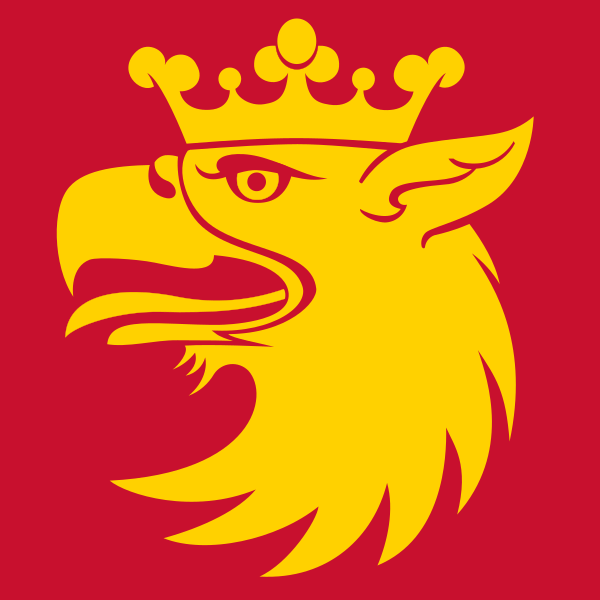Image: Vapenflagga för Skåne län

Description: The banner of arms of the county of Scania, Sweden. According to currently valid heraldic norms and traditions, the proper flag of a Swedish county is the so called banner of arms. A banner of arms is essentially a coat of arms in flag form. It must not show the outer shield shape that arms are usually shown with, but it otherwise features the same design, adapted so that the contents satisfyingly fill up the available area. Any contingent accessories around the shield, such as crowns, helmets, or supporters, are left out. The Swedish National Archives recommend the use of banners of arms, which stand in contrast to certain incorrect types of flags, such as ones bearing logotypes, or ones displaying the coat of arms as an escutcheon upon a unicoloured background. Such flags are inappropriate from various standpoints, including but not limited to heraldic, graphical, vexillological, and traditionalistic ones. But despite the county administrative boards being government agencies themselves, some of them utilize incorrect flags instead of the correct banner of arms. In Sweden, county arms and their corresponding flags represent not only county administrative boards, but also counties as geographies. The heraldically correct county flag may be used by the general public to express regional identity, as long as proper procedures and customs are followed. The griffin as a symbol of Scania has a long history. As the most important province that was ceded to Sweden as a result of the Treaty of Roskilde in 1658, Scania naturally needed to be represented with armorial bearings at the funeral of Charles X Gustav of Sweden in 1660, and it was in preparation for this ceremony that the provincial arms were created. It was councillor Gustav Bonde that suggested using the griffin's head from the arms of Scania's biggest city Malmö in the new provincial arms; the tincture of the field was however changed between the two, from silver to gold. Malmö's arms themselves are even older. They were granted in 1437 through letters patent issued by Eric of Pomerania, and it is from his own Pomeranian ducal arms that the Malmöite and Scanian griffin originates. Scania County was created in 1997. The previous counties of Malmöhus and Kristianstad both bore griffin's heads in their respective arms. This, together with the fact that the newly established county is named after the historical province with the same borders, made the griffin's head a logical choice of charge in the new county arms. But unlike other counties sharing names with provinces with similar boundaries, the arms of Scania County are not exactly the same as those of the province of Scania: the county actually uses inverted tinctures from that of the province. The arms of Scania County were registered with the Swedish Patent and Registration Office on the 5th of September 1997, with the following blazon (directly translated): "In a red field an erased griffin's head, crowned with an open crown, all of gold." This emblazonment was drawn by Vladimir A. Sagerlund when he was the heraldic artist at the National Archives.
Title: Vapenflagga för Skåne län
Credit: This vector image includes elements that have been taken or adapted from this file:
Author: Vladimir A. Sagerlund (emblazonment)
Permission: This image shows a flag, a coat of arms, a seal or some other official insignia. The use of such symbols is restricted in many countries. These restrictions are independent of the copyright status.
Usage Terms: Creative Commons Attribution-Share Alike 3.0
License: CC BY-SA 3.0
License Link: https://creativecommons.org/licenses/by-sa/3.0
Attribution Required?: Yes
Image usage
The following 5 pages link to this image:

